by the Curious Scribbler
I went into Argos today to collect a purchase made online. The store was perfectly empty of customers, and a young woman at the door directed me to a young man at the right hand end of the counter. Separating him from me was a broad no man’s land of diagonally placed yellow tape on the floor, a no go zone reaching six feet from the counter. Standing obediently outside this forbidden zone I began to state my business. But this was not good enough. I was instructed to move to the left and stand with my feet upon the two footprints in a red box before my order number could be processed! I then progressed to a second red box marked with two footprints order to receive my order. Am I alone in suffering from instruction fatigue?
At Westonbury Water Gardens, near Presteigne last week, I and my companions obediently followed the one way system around the garden. It was disappointing that the eccentric water-powered cuckoo clock has been disabled for the pandemic. But we were really nonplussed by the instructions at the approach to the toilets. On a table outside we found instructions to use hand sanitizer and don the provided blue nitrile gloves before entering, then to discard the gloves in the bin provided on leaving. Once inside, one was faced with a dilemma: wash the gloves, or remove the gloves and wash the hands? And there being no hot air hand driers to blow virus particles around the room, how to refit the gloves upon wet hands? In the end I came away with washed hands and the gloves – which may come in handy some time.
At Lower Brockhampton Park, we had to pay online for timed entry to the National Trust grounds and arrive in our half hour slot, or not at all. While this laudably limited the number of people in the outdoor setting, and understandably denied access to the house, we also found that many of the paths leading to attractive features had been roped off, and found ourselves instead on a muddy track leading nowhere interesting. Could we not have been trusted to socially distance ourselves out of doors?
In Llanidloes Church I had hoped to view the 13th Century arcade rescued from from Cwmhir Abbey after the Dissolution and was encouraged by the sight of an open church door. Sadly we found just the porch was open, adorned with origami doves and a plethora of notices!
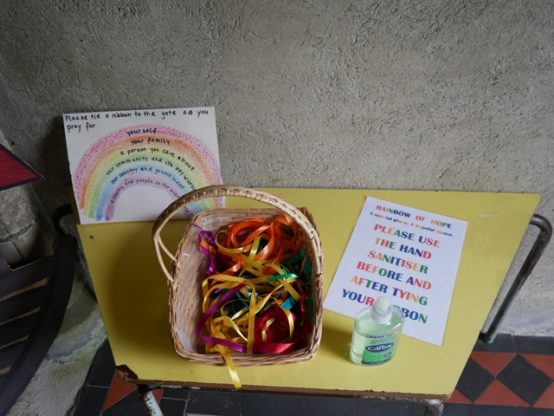
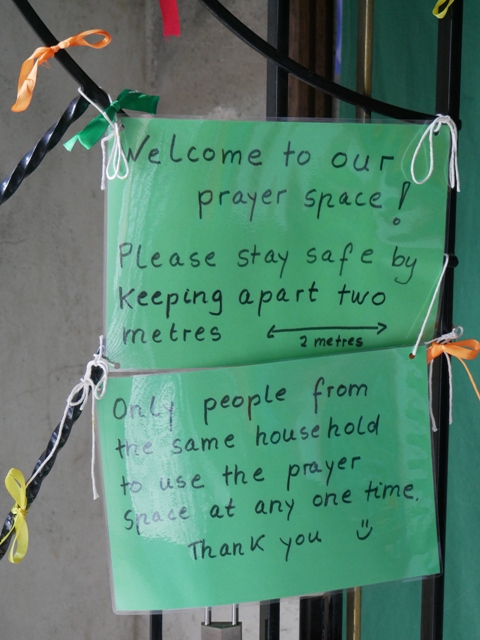
The church seems to be taking an especially discouraging approach to re-opening, in spite of Welsh government permission to do so. Other than when services are scheduled it is rare indeed for a random church visitor to find another person already present in an average parish church. Surely one admonitory notice and a bottle of hand sanitiser would suffice here?
These small but baffling restrictions are disruptive. I am minded to only to frequent places where there is absolutely no one to tell me how to behave. In this respect a weekend outing to Clywedog Reservoir ticked all the boxes! First we parked at the Bryntail Lead Mine car park below the 100 foot dam. Respectfully passing a few other tourists, we walked across the footbridge, and passed through a metal gate to visit the ruined mine buildings.
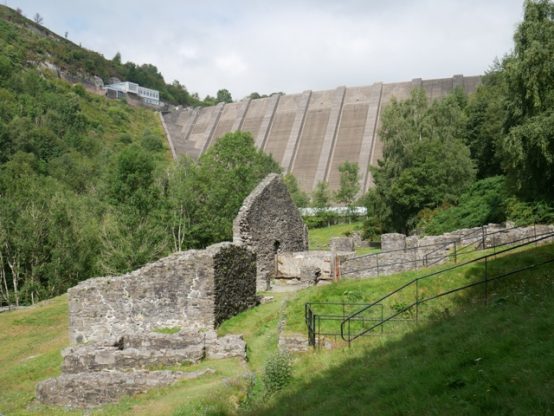
Bryntail lead and barytes mine works
The only admonishment came from that wonderful cast iron Cadw warning which displays people falling over around a variety of obstacles, overhead or underfoot. (Should the central picture be re-interpreted as a warning to avoid a person with a headache and a sneeze?)
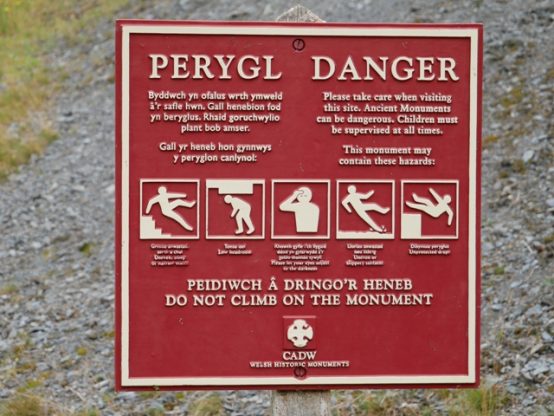
The Cadw warning sign is an artwork in its own right
Climbing a path from the mine ruins we rose through dunnock-infested bracken and gorse to above dam level and were rewarded with the sight of cormorants wheeling on straight wings high overhead. They look extraordinarily prehistoric circling on high, instead of flapping industriously over the sea as one usually sees them.
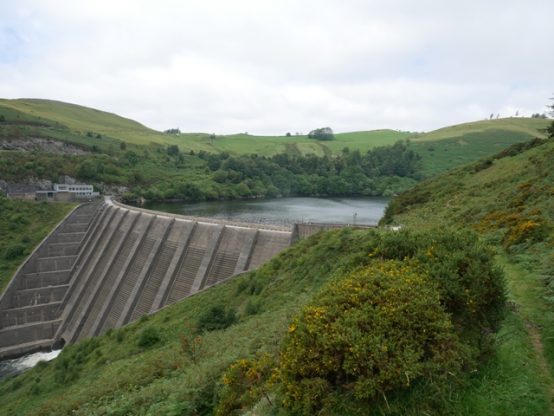
Clywedog reservoir
Later we drove along the western side of the reservoir, and picnicked on the grass. At the head of the reservoir we stopped to view the Clywedog ospreys’ breeding tree and the two fledged youngsters perching grumpily in nearby conifers. No adult brought them fish. Later, we read that a Clywedog osprey had chosen to take that day off to visit their colleagues on the Dyfi Estuary.
The return to Aberystwyth via the mountain road to Machynlleth was uplifting, with another pause to gaze down the spectacular river-cut gorge at Dylife to the U shaped valley beyond. The Cambrian mountains were sculpted by the last ice age. They may be lower than Snowdonia, but they offer space and tranquillity and a reassuring absence of rules. I think we passed three cars on the way.
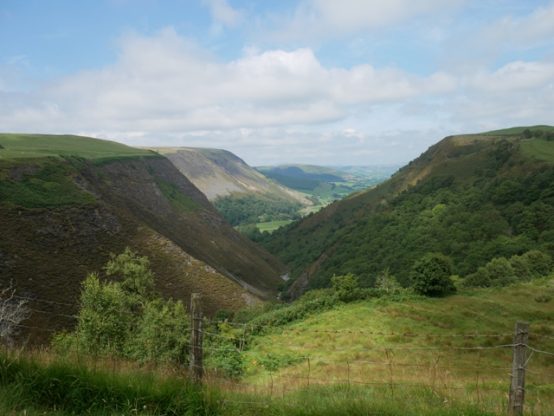
The Dylife Gorge
